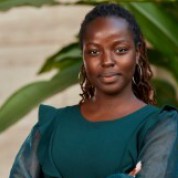PS 2.1
Reducing the Digital Divide: How to Ensure an Enabling Environment for Equitable Tech for All
01
Feb
AI and other innovative technologies are increasingly integrated into the fabric of society, including healthcare, finance, education, and law enforcement. If these systems are not developed and deployed with equity in mind, they risk being used by only by elites in societies and/or perpetuating and even exacerbating existing biases and inequalities. Those who could benefit most from digital health tools and interventions, like persons from low socio-economic strata, vulnerable or marginalized communities, older adults, people with disabilities, and those from rural communities, are often the ones with limited or no digital literacy. By ensuring equity in health technologies, we can mitigate these risks and even promote fairer, more just outcomes across different sectors of society.
Moreover, an equitable environment fosters trust and acceptance among diverse populations. By addressing the needs and concerns of marginalized communities and including them in technology development for their benefit, we can create systems that are more relevant and beneficial to a wider audience.
Thus, there is both promise and worry ahead as the use of health technologies spreads throughout the world. For example, in developing countries, where rural areas grapple with severe shortages of skilled healthcare providers, health technology holds transformative potential. It not only amplifies remote access to physicians and healthcare services but also presents a cost-effective and equitable solution. Adoption of technologies by vulnerable populations also significantly increase and democratize access to new capabilities and expertise. But this will only come if we purposively make it happen. Currently, the digital divide is wide and highly prejudiced. UNICEF estimates that only one in 20 school-age children from low-income countries has internet access at home, while nearly nine in ten from high-income countries do.[1] We must bridge these divides by providing the necessary infrastructure, education, and resources to ensure that benefits are widely distributed.
[1] How many children and young people have internet access at home? Estimating digital connectivity during the COVID-19 pandemic”. UNICEF, 2020.
The objective of this session is to present and examine global examples of health technologies and biases and disparities in their design/implementation and how experts and communities – always a necessary collaboration - are working together to solve them.
Biosketch
Daniel Messer
Debbie Rogers
Edward Booty
Osama Manzar
Rose Delilah Gesicho






